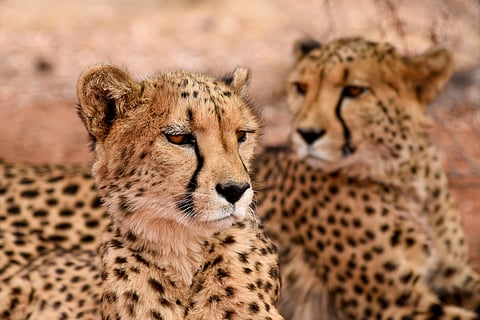
- Destinations
- Experiences
- Stay
- What's new
- Editor’s Picks
- Responsible Tourism
- CampaignsCampaigns
- Subscribe

Tucked inside the Vindhya hills of central India, Kuno National Park is situated within the Kuno Wildlife Division of Sheopur district of Madhya Pradesh. The park takes its name from the Kuno River which flows through it.
Initially, the protected area was declared a sanctuary in 1981, which was later upgraded to a national park in 2018 when there were plans to introduce lion from Gir in Kuno. Subsequently, the plan was scrapped. However, it was decided that Kuno National Park would be home to the African cheetahs which were to be introduced in India.
With the introduction of eight cheetahs on September 17, Kuno has now shot to global fame. Media reports quoting the forest department said that the park has been prepared to receive the cheetahs in various ways, including increasing the prey base. According to media reports, the cheetahs arrived in Gwalior from Namibia and transported to Kuno by Indian Air Force helicopteers.
India was once upon a time home of the Asiatic cheetahs but the animal was officially declared extinct in 1952.
The Kuno National Park exhibits characteristics of both northern and southern tropical dry deciduous forest and also includes riverine forest, savannah and grasslands. Some of the key trees found here are Kardhai, Salai, Khair, etc. The diversity of its landscape and vegetation has also made it home to many species of mammals and birds apart from reptiles, amphibians and fish. Some of the key faunal species include spotted deer, sambar, nilgai, jackal, wild boars, etc.
The national park has three entry points &ndash Ahera, Tiktoli and Peepal Bawadi. Some of the nearest transport hubs for Kuno National Park are Gwalior, Shivpuri, Kota, Jaipur and Jhansi. The distance depends on which gate you are approaching. For example, Gwalior is 160km from Ahera and Peepal Bawadi, and 165km from Tiktoli. Accommodation is available at the state forest department&rsquos rest houses subject to prior permission and availability.
Although many wildlife enthusiasts are waiting to go on &lsquocheetah safari&rsquo here as and when it starts, the full impact of the project will only be known in the years to come.
